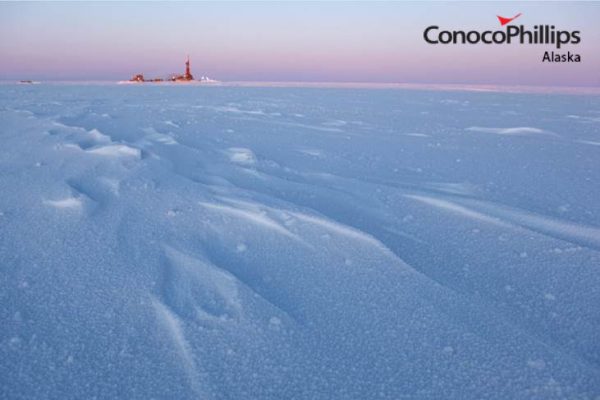UAA announces winning proposals for 2017 ConocoPhillips Arctic Science and Engineering Endowment
by Michelle Saport |

Faculty members at the University of Alaska Anchorage are moving the needle on Arctic research, thanks to the generous support of ConocoPhillips Alaska.
The faculty members are the recipients of a ConocoPhillips Arctic Science and Engineering Endowment Award. The endowment was created in 2008 with a $15 million gift from the company to bolster Arctic science and engineering programs and research at UAA; it is the largest in the University of Alaska system.
The five winning projects, selected by a UAA committee through a rigorous evaluation process, will receive a total of nearly $450,000 for fiscal year 2017. Projects include:
- Accelerated Corrosion Under Insulation Test Apparatus (Matthew Cullin) Up to 60 percent of pipeline maintenance costs are related to corrosion under insulation (CUI). This apparatus will allow UAA faculty and students to determine the mechanisms and rates of CUI under simulated and accelerated atmospheric exposure conditions to evaluate remedial solutions for known problem locations. This is a continuation of last year's project.
- Reinvigorating Arctic Oil/Gas Exploration With New Shelf-edge Exploration Concepts (Jennifer Aschoff/Simon Kattenhorn) Complex stratigraphic traps form important oil and gas reserves in petroleum basins. In Arctic areas such as the North Slope, their exploration potential has not been thoroughly evaluated. This project will evaluate the petroleum potential of cretaceous sandstone bodies in the subsurface at the edge of the paleo-continental shelf in Arctic Alaska.
- Vortex-Induced Vibration in Marine Pipelines With Application to AKLNG (Jifeng Peng/Tom Ravens/Zhaohui Joey Yang) Vortex-induced vibration (VIV) can have detrimental impacts on the integrity of pipelines if not properly accounted for in design. This project will involve a team of experts in the field of fluid dynamics, structure dynamics, coastal processes and geotechnical engineering to develop a new VIV model that employs fully coupled fluid dynamics, nonlinear structure and soil dynamics.
- Arctic Coastal Erosion Modeling Using Machine Learning and Process-Based Approaches (Matthew Kupilik/Tom Ravens/Caixia Wang/Frank Witmer) Coastal communities, industry, and governmental agencies in Arctic Alaska are suffering from accelerating coastal erosion due to climate warming. This project will develop predictive models based on machine-learning approaches and detailed accounting of the thermal and coastal processes. It will also use modeling to examine techniques to slow coastal erosion.
- Mycelium-based Biomaterials for Sustainable Thermal Insulation in the Arctic (Philippe Amstislavski/Zhaohui Joey Yang) New thermal insulation biofoams can be bioengineered from white-rot fungi native to Alaska and local forestry byproducts. Renewable and biodegradable, these biofoams could be developed into a sustainable alternative to plastics currently used for insulation. This project aims to improve the biofoam's thermal resistance and lower its density, without compromising its stiffness and strength, in order to bring it closer to field experimentation.
The ConocoPhillips Arctic Science and Engineering Endowment provides awards annually for winning proposals. For more information about the endowment, please visit uaa.alaska.edu/chancellor.
 "UAA announces winning proposals for 2017 ConocoPhillips Arctic Science and Engineering
Endowment" is licensed under a Creative Commons Attribution-NonCommercial 4.0 International License.
"UAA announces winning proposals for 2017 ConocoPhillips Arctic Science and Engineering
Endowment" is licensed under a Creative Commons Attribution-NonCommercial 4.0 International License.









